
But this is a difficult choice now, and in the nineties it was simple: which sound card was obtained, the best. In reality, I was not able to get anything at that time, and my 386th computer of those times lived my whole life, making sounds only with a hard drive, a PC speaker and a modem. But the first Doom tests with a “sound blaster” from acquaintances and friends in 1994 made an incredible impression. To realistic (for those times) graphics were added no less vital (also for those times) sound effects. Cool!
Okay, the Creative Sound Blaster sound card will definitely be installed in my retrocomputer. Which one is also a difficult question, and the final choice will depend not only on the capabilities provided by the card, but also on the presence or absence of certain bugs, which are also authentic . What options do I have? And what options exist at all? And what about the geese? In this theoretical post, I will try to answer these questions, and at the same time I will talk about ancient technologies for extracting sound from your IBM-compatible PC.
All related articles:
0. 1992 in the computer press
1. Consider the motherboard of the 386th computer
2. Benchmark of the 386th processor and the dashing nineties
3. Difficult choice of sound card for DOS games <- you are here
I keep a diary of a collector of old pieces of iron in a Telegram .
Technologies
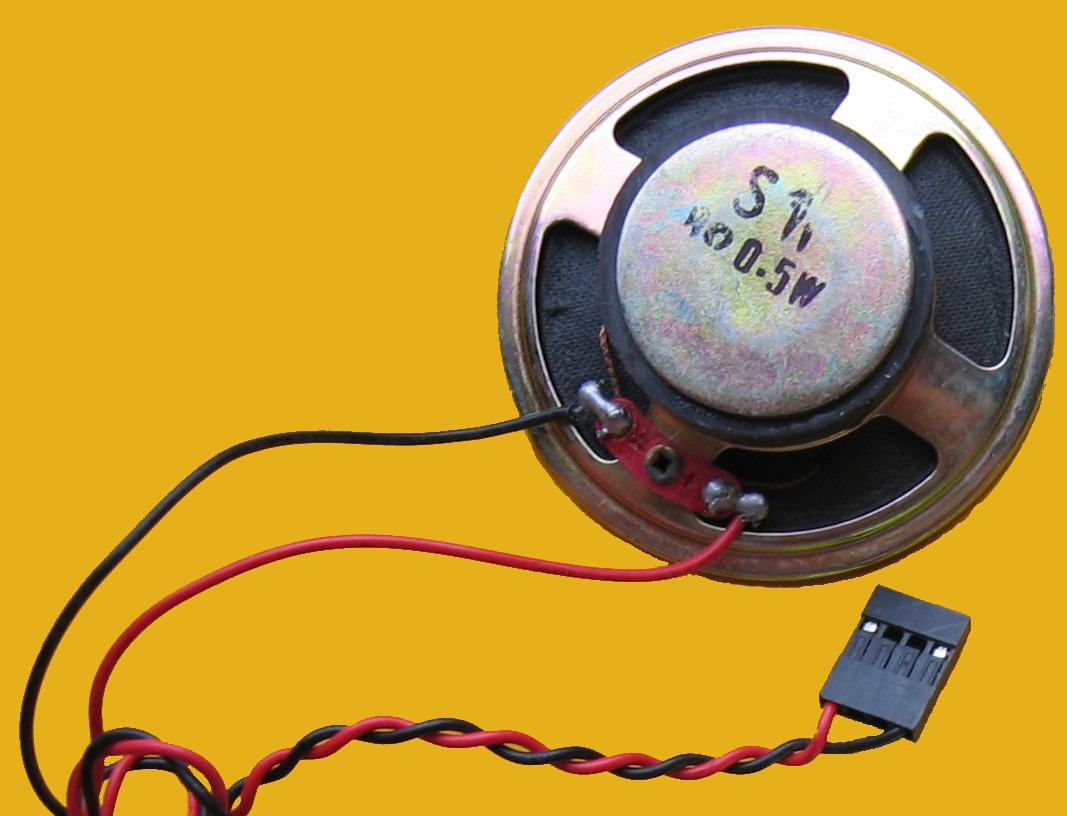
Initially, the first device to play sound on IBM PC computers was PC Speaker, a six-centimeter speaker connected directly to the motherboard, controlled by a separate Programmable Interval Timer chip. In standard mode, it is able to publish only a characteristic squeak. By cunning programming, it was possible to make the speaker make more complex sounds, a good example is in the video below (this is a demo of 2015 on the original IBM PC with CGA graphics, the final track starting from 6:35 is of particular interest).
From 1981 to 1987, this was the more or less the only way to make the IBM PC sound, and at that time the platform was seriously losing even to eight-bit systems with a separate sound chip. Now, however, such a sound causes a certain nostalgia. Why, when we, schoolchildren, were allowed to play racing in the only class with IBM PS / 2, there was no sound at all, since the speakers were dismantled in all computers. The missing sound and very sketchy graphics were supplemented without problems by the power of imagination.
A small upgrade of sound capabilities was offered by the 1983 PC-compatible Tandy 1000 computer - there, a separate microcircuit could play three voices simultaneously. How Prince of Persia sounds on it, you can listen here .
In 1987, three sound cards were released at once, each with its own approach to sound generation. The Creative Music System used two Philips SAA1099 chips, providing 12-voice polyphony. The Adlib sound card used a Yamaha OPL2 chip. Unlike Philips microcircuits, which are capable of generating rectangular-shaped audio signals, sinusoidal signals were generated and modified here. The chip could simultaneously play 9 voices. Covox Speech Thing was the simplest digital-to-analog converter with a bit capacity of 8 bits in mono mode, connected to the parallel port of a personal computer.
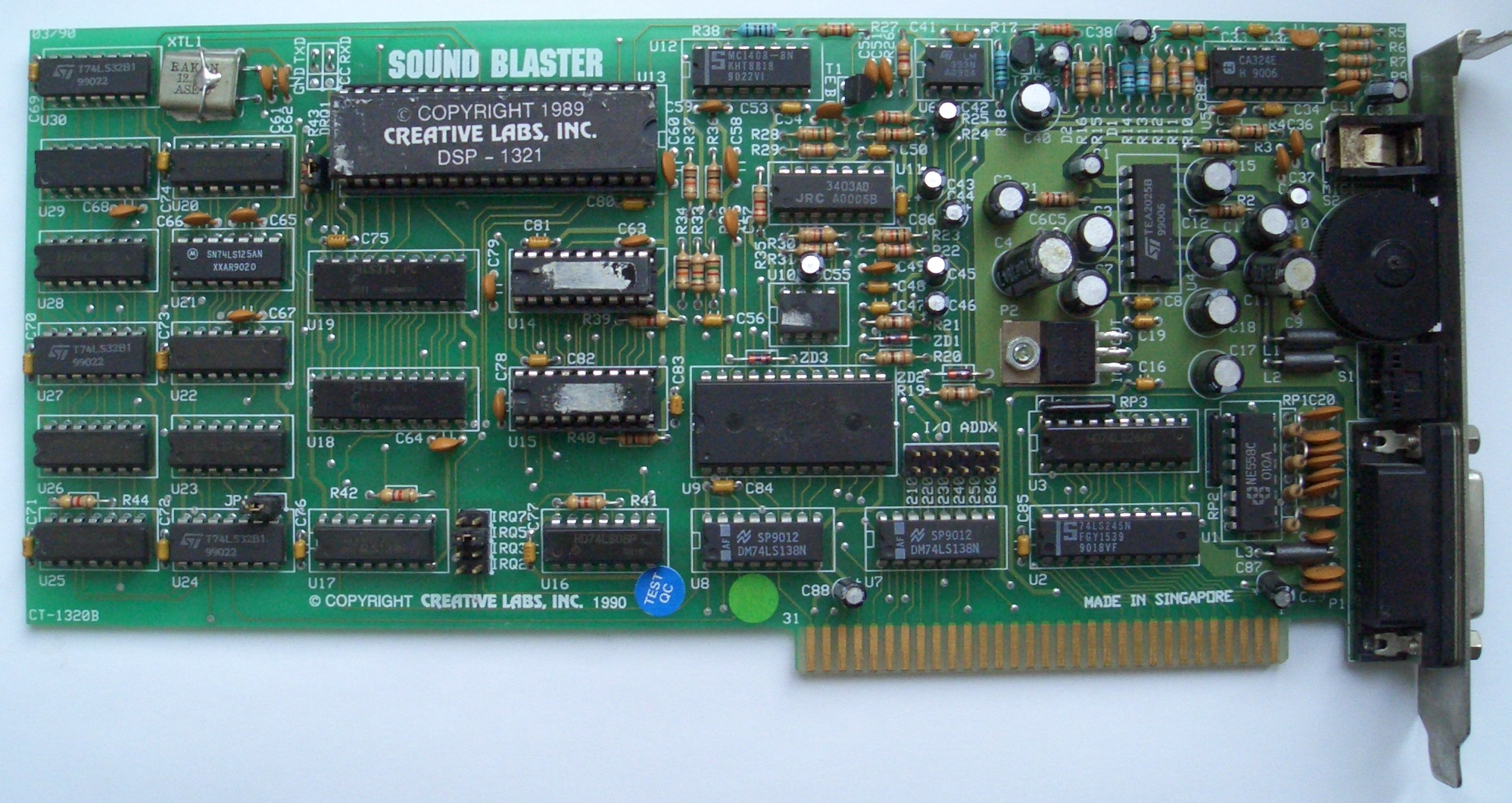
Of these three, the development of the Canadian Adlib turned out to be the most promising, but it was not for her to realize these prospects, but for Creative. In 1989, the first sound card was released under the Sound Blaster brand. Philips chips are left on the first-version eight-bit controller for compatibility, but there is also a Yamaha OPL2 FM synthesizer, and most importantly, the ability to play pre-recorded digital sound has appeared.
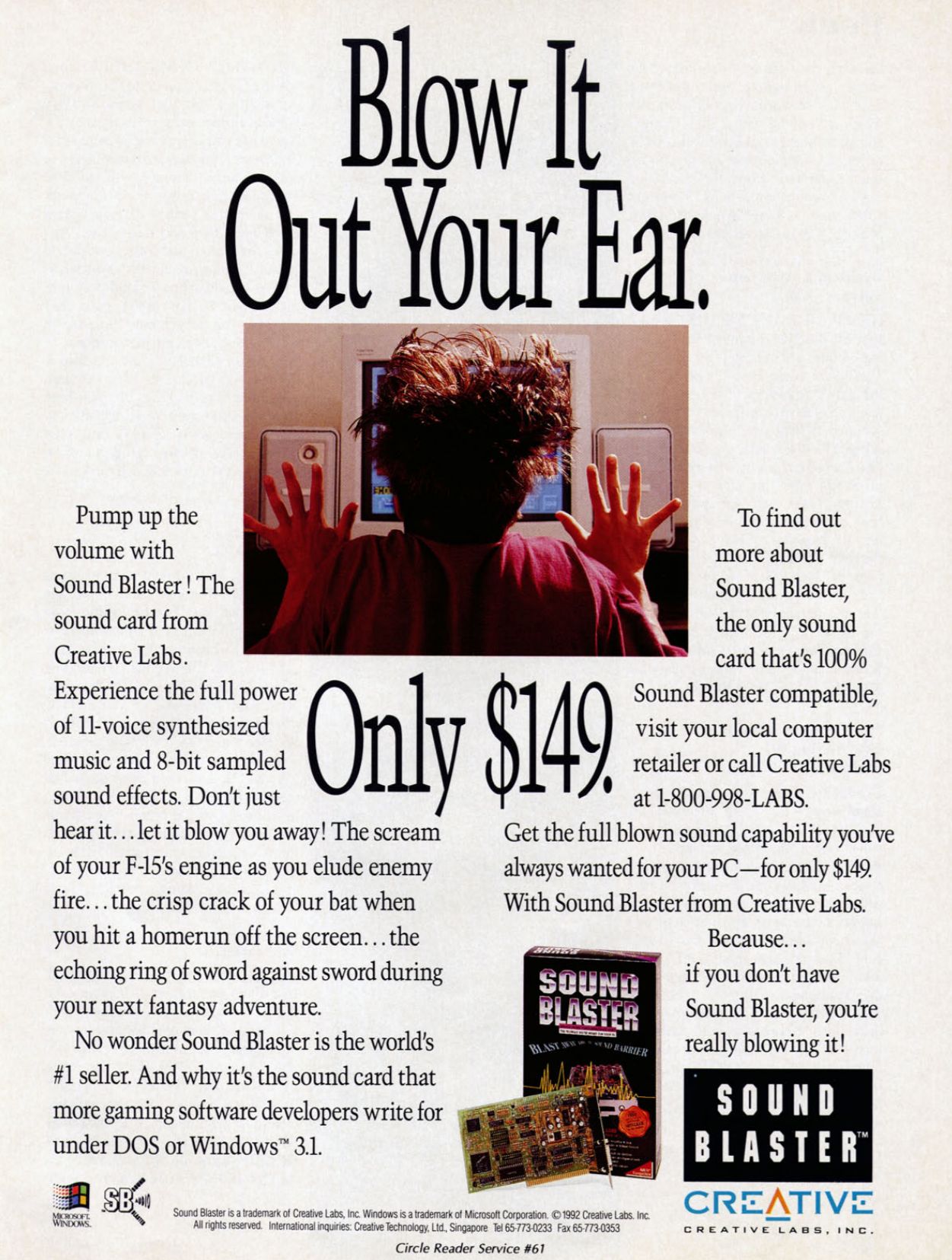
Here, perhaps, you need to stop and deal with the terms and realities of that era. Of course, at the level of not a specialist, but an amateur, which I am. When you buy a music CD, you get approximately 650 megabytes of digital data. This data is transferred to a sound card, where, using a digital-to-analog converter, they are converted into sound that someone previously recorded for you. All modern games operate with the same sound samples: we take a music track, background noises, the sound of steps, the character’s breathing, dialogs, we mix all this in the right proportions and get the sound design. Thanks to Sound Blaster, to some extent, Covox and similar solutions, game developers have had such an opportunity since the late eighties. The problem is that there is no (a) space on the disk to save sound even in a truncated format compared to CDs and (b) the processing power to work with such volumes of data. Even with the advent of computer optical drives, audio from audio discs was still transferred from a separate DAC in a CD-ROM to a sound card in analog form for a long time.
It was possible to get around the restrictions only with the help of sound synthesis: in this case, we store, on the disk, roughly speaking, only notes. Since I started with the Prince of Persia, I will continue on with the example of this 1989 game. The music in this game is stored in the form of MIDI instructions (to choose from, for a chip in the Tandy 1000, sound cards Sound Blaster, Adlib, and so on). Sound effects (the sounds of doors, steps, swordfights, etc.) are pre-recorded - this is essentially an uncompressed digital sound with a sampling frequency of 11025 hertz (a quarter of the CD standard), monaural, with a resolution of 8 bits per sample. If you have Sound Blaster or Covox, these samples will play. If not, you'll listen to the effects through PC Speaker or another device. A detailed analysis of the storage formats in Prince of Persia is here .
Thus, in the case of a Creative Sound Blaster sound card, we get two devices in one: separately synthesis of music, separately playback of sound samples. If you set out to reproduce sound from old games on authentic hardware, then it is important for you how well (or badly) the card copes with both tasks. And here we come to the main conclusion about the early era of computer sound: this is an incredible technology zoo. Only the sound cards I mentioned use different synthesis chips: Philips in the Creative Music System, Yamaha in Adlib, and Creative Sound Blaster. Later, new-generation Yamaha FM synthesizers began to be used (OPL3, since 1992). Since they use different synthesis methods, they should sound different, right? Yes! Looking ahead, I’ll say that the reproduction of digital sound samples is also different!

And by what criteria then choose retro sound? There is a danger here to collect a collection of a dozen ancient sound cards, and sit to compare how they sound. I won’t go this way (okay, I’ll go, but not so far), since in the end I will use only one device. So you need to somehow limit yourself. The criteria are simple: "I had such a fee in childhood, so I want it." Or, in my case, “I am building a 1992 computer, and I also want sound from there.” Or the most difficult: “I have a favorite game, I will find out under which synthesizer music was written for her, and I will buy a sound card with it.”
1992 Sound Cards
In the three years since Sound Blaster 1.0 was released, Creative has made its products the de facto gaming sound standard. In the computer press of those years, competitor devices are touted as “Sound Blaster compatible.” Creative retorts with its ad: “Why buy compatible when there is a standard?”. On the one hand, the consumer is simple: buy a Sound Blaster or at least a “compatible” device, and most games, new and recently released, will support it. On the other hand, in such a situation, it is difficult to bring any new technologies to the market: it is necessary to convince both game developers and users that the game is worth the candle. At the same time, it’s expensive to implement new technologies and to ensure compatibility with old ones: you will have to convince the consumer that a doubled price tag for a new product will really pay off. And the consumer (with the exception of very rich people) as a whole lives with PC Speaker, and he is fine.
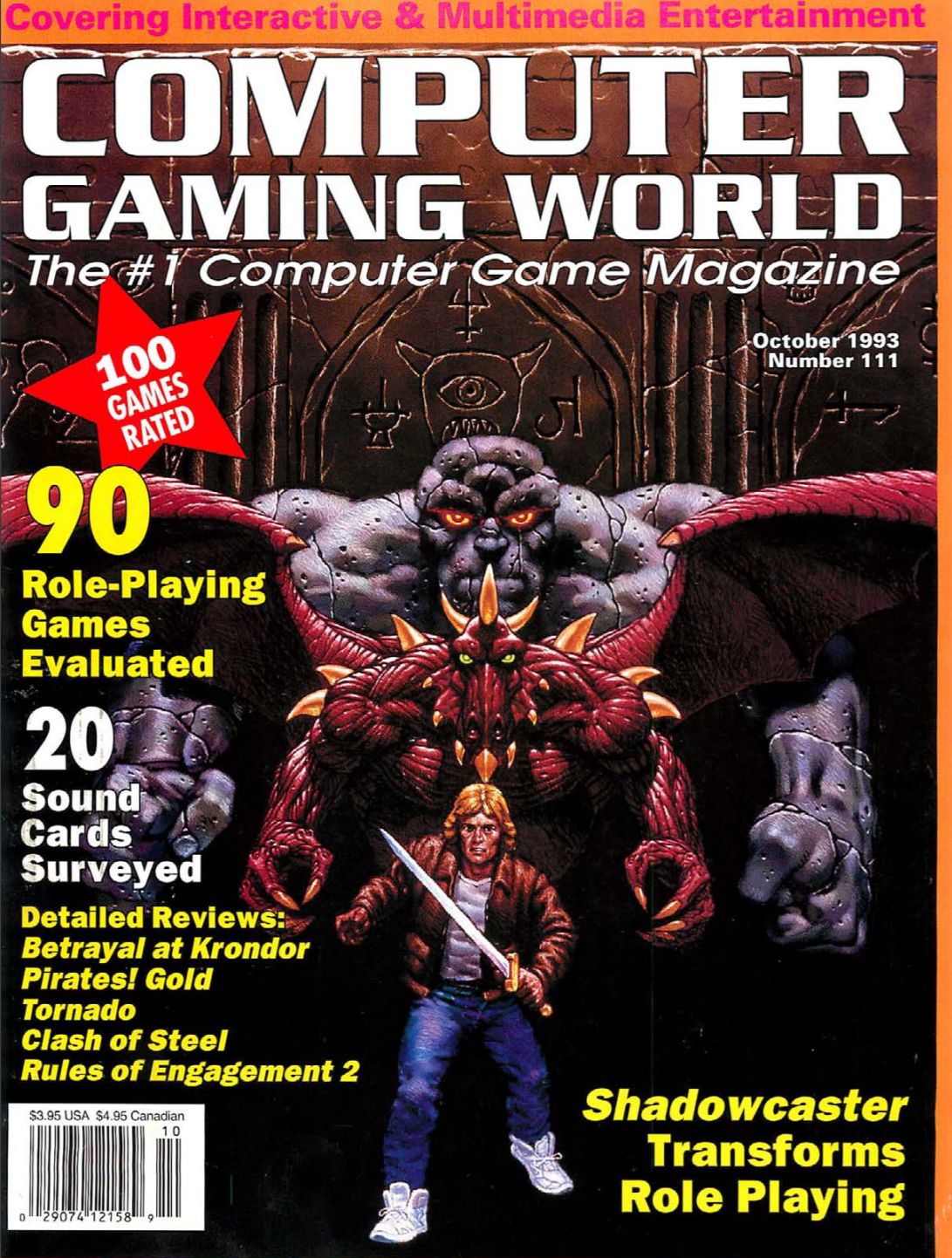
In October 1993, Computer Gaming World magazine published an overview of 20 sound cards, including two attempts (unsuccessful) to defeat Creative hegemony. First: Gravis Ultrasound , the legendary Goose. Released in 1992, this sound card is one of the first to implement the principle of tabular synthesis. Unlike FM synthesis, where the sound is obtained by modifying simple sound waves of a certain shape and frequency, tabular synthesis uses pre-recorded samples of real musical instruments (pianos, drums, etc.). Samples are stored in RAM on a sound card and can be replaced with others, at the request of the user or game developer. Tabular synthesis provides subjectively better sound quality. Computer Gaming World is not impressed: by the end of 1993 it was not the only audio card with Wavetable, compatibility with Sound Blaster is weak, and specialized drivers are required for operation, which occupy valuable computer RAM. In 2019, the Goose is more expensive than in 1992, this is a pleasant addition to any collection of computer retrogreen. But in my case, I want something more standard.
The second attempt was made by Adlib, which in 1987 correctly guessed with the technology, but lost in the competition. The Adlib Gold sound card is equipped with a Yamaha OPL3 FM synthesizer and is capable of reproducing 12-bit digital sound. In itself, this is slightly inferior to the capabilities of the sound cards of competitors, but there is a “killer feature”. A separate module added the possibility of spatial sound special effects. This functionality was later implemented in the form of A3D technologies from Aureal Vortex and Creative EAX. The feature did not take off: there was almost no support in the games, Creative could not be defeated. Soon after, both Adlib and Gravis ceased to exist. Unlike Ultrasound, which is simply expensive, it’s almost impossible to find the original Adlib Gold - it’s not uncommon anymore, it’s unobtanium.
Sound Blaster Suffering
After such an excursion into history, I turned to a practical question: okay, if most of my favorite games require Sound Blaster, then which one to choose? Although the compatibility between the “blasters” of different years is quite high, individual models are very different from each other. Just in 1992 there was a transition to 16-bit sound cards.
The Sound Blaster 16 card released this year can play CD-quality sound. The problem with it is that it also has a maximum concentration of hardware bugs per square centimeter of area. First of all, it is widely known in narrow circles of DMA Clicking Bug : in a number of games, the playback of digital samples is accompanied by unpleasant clicks. There are problems when working with an external MIDI device through the port on the sound card. You can take the revision of the card “later”, but there Creative decided to abandon the Yamaha OPL3 branded chips by offering its own hardware implementation of the synthesizer. And at first it sounded ... not quite as it should.

You can solve all problems with the latest and best Sound Blaster for the ISA bus. This is a Sound Blaster AWE64 Gold card that supports tabular synthesis (4MB of memory is allocated for it), with a high-quality, low-noise analog part. I have such a card, but here the question of authenticity arises. AWE64 Gold supports Plug and Play technology, while addressing and interrupt numbers are assigned jumpers on the boards of their era. There is no "correct" Yamaha synthesizer chip. In the midst of retro-iron collectors, the previous version of Sound Blaster AWE32 is much appreciated, but I decided to go the other way.
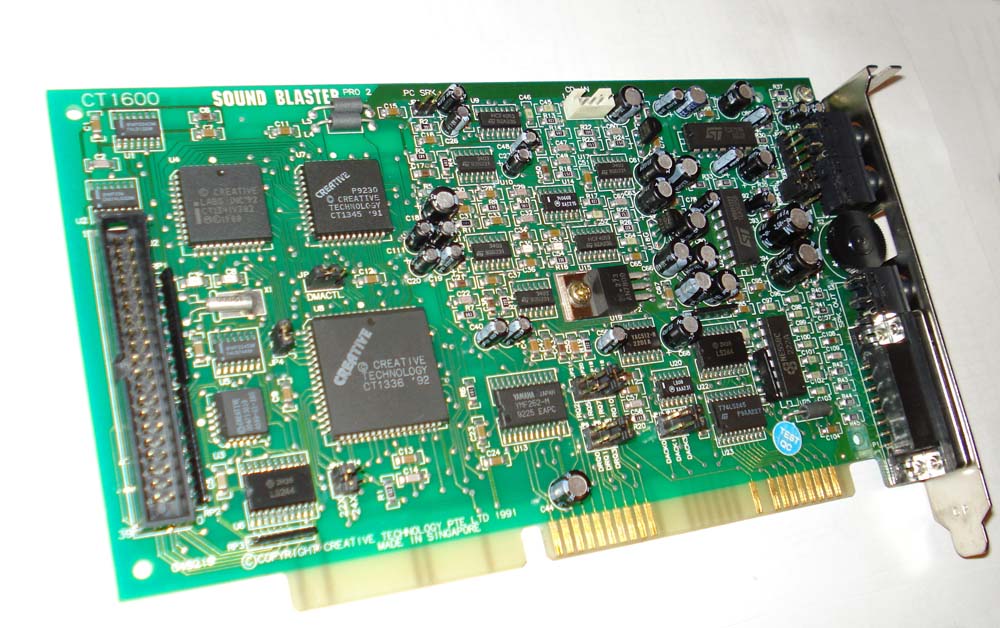
Sound Blaster Pro - a sound card quite relevant for 1992. Although the length of the card corresponds to the 16-bit ISA slot, in fact it is still eight-bit. A major innovation for the original 1991 version was the use of two Yamaha OPL2 chips for stereo synthesized sound. In the Pro 2 revision, these two chips were replaced with a single Yamaha OPL3.
This is not the most optimal sound card from the point of view of the music lover: it is equipped with a non-disconnectable four-watt sound amplifier for passive computer speakers common at that time. Easily catches pickups from neighboring boards in a computer. CD-quality sound reproduces only in mono. But at the same time, it is often recognized by retro-collectors as the best sound card for DOS games. Sound Blaster Pro card closes the history of 8-bit sound cards for IBM PC, it is most compatible with games of the late eighties and early nineties. And it does not have as many bugs as the more progressive SB16.
In the PCI era, sound cards became standard PC equipment, but there wasn’t such a variety of technologies. In the late nineties, more often than not, we limited ourselves to integrated sound on the motherboard, although we criticized its quality. The first five years of computer sound for x86 systems were much more interesting than the next twenty seven. In the following article I will try to justify why SB Pro2 is considered the best, compare it with Sound Blaster 16, AWE64 Gold and modern sound according to DosBox. I will clearly demonstrate why the old sound cards - no, no better - are more interesting.